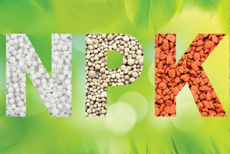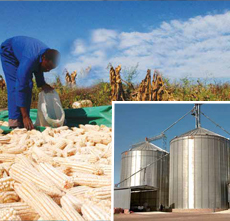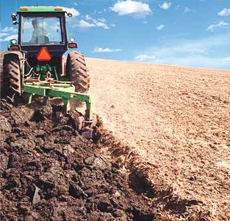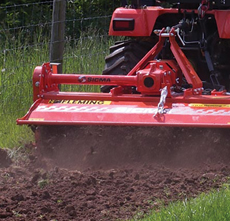Understanding Your Plant Analysis Report
 Total Nitrogen: Nitrogen is a critical part of proteins in the plant. It is also an important part of chlorophyll and plays a key role in photosynthesis. Nitrogen deficient plants usually have a pale green or yellow colour. In grasses, the yellowing usually starts at the leaf tip and goes down the middle of the leaf. Because nitrogen is mobile in the plant, the older leaves will show the symptoms first.
Total Nitrogen: Nitrogen is a critical part of proteins in the plant. It is also an important part of chlorophyll and plays a key role in photosynthesis. Nitrogen deficient plants usually have a pale green or yellow colour. In grasses, the yellowing usually starts at the leaf tip and goes down the middle of the leaf. Because nitrogen is mobile in the plant, the older leaves will show the symptoms first.
The total N content of a plant includes all forms of nitrogen in the plant tissue. The total N content represents the nitrogen status of a crop up to that point in the growing season, but does not predict the nitrogen status of the crop in the future.
Read more ...
DEMYSTIFYING AGRICULTURE INSURANCE
Climate change is currently one of the biggest risks that farmers in Africa face. Inconsistent weather in recent years has resulted to a decrease in agriculture production, an increase in poverty levels and a threat to food security. Agricultural risks not only affect farmers, the effects spill over to the entire agribusiness value chain. Previously, the President of Kenya had declared the drought in Kenya a national disaster with a call for international support. The drought starts in periods when rains fail and temperatures are unusually high. Risk mitigation strategies such as climate smart agriculture and agriculture insurance are some of the main ways through which farmers can address these risks.
Agriculture insurance is the protection which farmers buy from insurance companies for their crops and livestock. Farmers pay some amount of money (premium) to insurance companies to compensate them when they incur losses. The sum insured is agreed at the inception of the contract and may be based on production costs, or on the expected crop revenue. Farmers can also insure against risks such as drought, hail, frost damage, fire and lightning, and pests & diseases for livestock. The following products are currently available in the Kenyan market from insurance companies and agriculture insurance providers.
Read more ...
Septoria Leaf And Glume Blotch
As a Threat to Wheat Production in Kenya
Introduction
Wheat is the second most important cereal grain in Kenya after maize. Wheat farming in Kenya is largely done for commercial purposes on a large-scale. Wheat production faces a range of challenges; unreliable rainfall, Insect pests, weeds and diseases. Septoria tritici Blotch (STB); one of the major economically important fungal diseases in wheat poses a serious and persistent challenge to wheat grown globally. This threat has triggered an intensive research effort to evaluate current disease control practices and to look for novel control strategies. Septoria leaf and glume blotch attacks the leaves and heads of wheat.
Read more ...
Modernizing Grain Storage with Technology: A Post-Harvest Perspective
 Grain storage has been a fundamental aspect of agriculture for millennia, dating back to the early days of human civilization when people realized the importance of preserving surplus crops for lean times. Over the centuries, the methods and technologies used for grain storage have evolved significantly, with the primary goal being to reduce losses due to pests, spoilage, and environmental factors. In recent years, the advent of advanced technology has ushered in a new era in grain storage, enabling farmers to modernize their post-harvest practices and enhance food security.
Grain storage has been a fundamental aspect of agriculture for millennia, dating back to the early days of human civilization when people realized the importance of preserving surplus crops for lean times. Over the centuries, the methods and technologies used for grain storage have evolved significantly, with the primary goal being to reduce losses due to pests, spoilage, and environmental factors. In recent years, the advent of advanced technology has ushered in a new era in grain storage, enabling farmers to modernize their post-harvest practices and enhance food security.
Read more ...
Advantages of Minimum Tillage
By Kimuri Mwangi
 Conservation Agriculture is described by FAO as a farming system that promotes minimum soil disturbance (no, or minimum tillage), maintenance of a permanent soil cover, and diversification of plant species. It enhances biodiversity and natural biological processes above and below the ground surface, which contribute to increased water and nutrient use efficiency and to improved and sustained crop production.
Conservation Agriculture is described by FAO as a farming system that promotes minimum soil disturbance (no, or minimum tillage), maintenance of a permanent soil cover, and diversification of plant species. It enhances biodiversity and natural biological processes above and below the ground surface, which contribute to increased water and nutrient use efficiency and to improved and sustained crop production.
One principle of conservation agriculture that is being advocated to farmers is minimum tillage. Experts have described it as “where you minimize breaking your land as we’ve always done usually using the disc plough where every year, we keep on breaking the soil.”
Read more ...
Technology In Farming
HOW FARMERS CAN USE TECHNOLOGY TO BE MORE EFFICIENT AND COST EFFECTIVE
Agriculture is among the main pillars of our economy; it contributes to Gross Domestic products and export earnings
 The increasing human population has resulted in a decrease in the land to cultivate; this has led to scarcity especially due to real estate’s development. This, therefore, demands for an increase in production per unit area at the lowest cost possible. This will help to ensure constant food supply and zero hunger in our nation. The use of technology plays a significant role in increasing efficiency and boosting agricultural productivity and resilience while ensuring sustainability.
The increasing human population has resulted in a decrease in the land to cultivate; this has led to scarcity especially due to real estate’s development. This, therefore, demands for an increase in production per unit area at the lowest cost possible. This will help to ensure constant food supply and zero hunger in our nation. The use of technology plays a significant role in increasing efficiency and boosting agricultural productivity and resilience while ensuring sustainability.
FARMING AS A BUSINESS
Farming is just like any other business, and hence farmers need to have a business plan for their farms, this involves having an investment plan and crop budget.
Read more ...
 Total Nitrogen: Nitrogen is a critical part of proteins in the plant. It is also an important part of chlorophyll and plays a key role in photosynthesis. Nitrogen deficient plants usually have a pale green or yellow colour. In grasses, the yellowing usually starts at the leaf tip and goes down the middle of the leaf. Because nitrogen is mobile in the plant, the older leaves will show the symptoms first.
Total Nitrogen: Nitrogen is a critical part of proteins in the plant. It is also an important part of chlorophyll and plays a key role in photosynthesis. Nitrogen deficient plants usually have a pale green or yellow colour. In grasses, the yellowing usually starts at the leaf tip and goes down the middle of the leaf. Because nitrogen is mobile in the plant, the older leaves will show the symptoms first. Grain storage has been a fundamental aspect of agriculture for millennia, dating back to the early days of human civilization when people realized the importance of preserving surplus crops for lean times. Over the centuries, the methods and technologies used for grain storage have evolved significantly, with the primary goal being to reduce losses due to pests, spoilage, and environmental factors. In recent years, the advent of advanced technology has ushered in a new era in grain storage, enabling farmers to modernize their post-harvest practices and enhance food security.
Grain storage has been a fundamental aspect of agriculture for millennia, dating back to the early days of human civilization when people realized the importance of preserving surplus crops for lean times. Over the centuries, the methods and technologies used for grain storage have evolved significantly, with the primary goal being to reduce losses due to pests, spoilage, and environmental factors. In recent years, the advent of advanced technology has ushered in a new era in grain storage, enabling farmers to modernize their post-harvest practices and enhance food security. Conservation Agriculture is described by FAO as a farming system that promotes minimum soil disturbance (no, or minimum tillage), maintenance of a permanent soil cover, and diversification of plant species. It enhances biodiversity and natural biological processes above and below the ground surface, which contribute to increased water and nutrient use efficiency and to improved and sustained crop production.
Conservation Agriculture is described by FAO as a farming system that promotes minimum soil disturbance (no, or minimum tillage), maintenance of a permanent soil cover, and diversification of plant species. It enhances biodiversity and natural biological processes above and below the ground surface, which contribute to increased water and nutrient use efficiency and to improved and sustained crop production. The increasing human population has resulted in a decrease in the land to cultivate; this has led to scarcity especially due to real estate’s development. This, therefore, demands for an increase in production per unit area at the lowest cost possible. This will help to ensure constant food supply and zero hunger in our nation. The use of technology plays a significant role in increasing efficiency and boosting agricultural productivity and resilience while ensuring sustainability.
The increasing human population has resulted in a decrease in the land to cultivate; this has led to scarcity especially due to real estate’s development. This, therefore, demands for an increase in production per unit area at the lowest cost possible. This will help to ensure constant food supply and zero hunger in our nation. The use of technology plays a significant role in increasing efficiency and boosting agricultural productivity and resilience while ensuring sustainability.